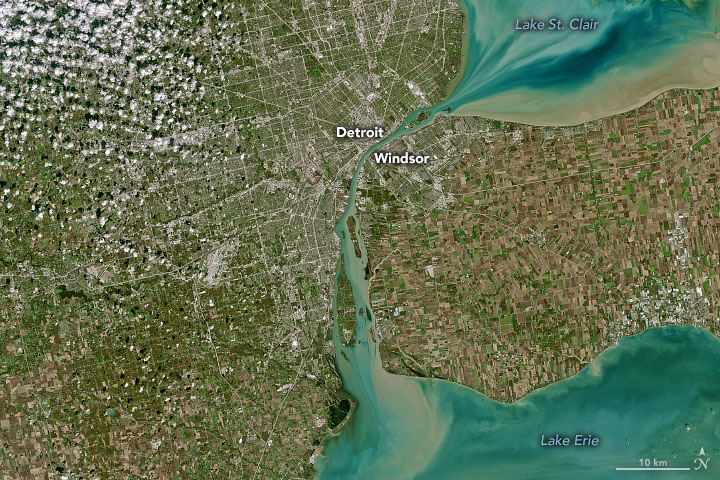First Light from Landsat 9
Nov 10, 2021
Landsat 9, a joint mission between NASA and the U.S. Geological Survey (USGS) that launched in September 2021, has collected its first images of Earth. Acquired on October 31, the “first-light” images provide a preview of how the mission will help people manage vital natural resources and understand the impacts of climate change. The new satellite extends an unparalleled data record that spans nearly 50 years of space-based observation of Earth.
“First light is a big milestone for Landsat users; it’s the first chance to really see the kind of quality that Landsat 9 provides,” said Jeff Masek, the mission’s project scientist at NASA. “When we have Landsat 9 operating in coordination with Landsat 8, it’s going to be this wealth of data, allowing us to monitor changes to our home planet every eight days.”
The natural-color image above was cropped from the very first one taken by Landsat 9 on October 31. It shows the Coronation Islands along the Kimberly coast in the state of Western Australia. The image below shows the metropolitan area around Detroit, Michigan (U.S.) and Windsor, Ontario (Canada), along with neighboring Lake St. Clair and Lake Erie.
Landsat 9 carries two main instruments: the Operational Land Imager 2 (OLI-2), which detects visible, near-infrared, and shortwave-infrared light in nine wavelengths, and the Thermal Infrared Sensor 2 (TIRS-2), which detects thermal radiation in two wavelengths used to measure Earth’s surface temperatures. Together the instruments can provide users with essential information about crop health, irrigation use, water quality, wildfire severity, deforestation, glacial retreat, and urban expansion, especially when put in the context of the long Landsat data record.
The new satellite and instruments are quite similar in design to Landsat 8, which was launched in 2013 and remains in orbit. Together the two satellites will collect approximately 1,500 images of Earth’s surface every day, observing the entire planet every eight days.
Landsat 9 features several improvements, including higher radiometric resolution, allowing the sensors to detect more subtle differences in surface features, especially over darker areas like water or dense forests. With 14 -bit radiometric resolution, Landsat 9 can differentiate more than 16,000 shades of a given wavelength; Landsat 8 provides 12-bit data and 4,096 shades. Landsat 7, the satellite being replaced, detects only 256 shades with its 8-bit resolution.
“The data and images from Landsat 9 are expanding our capability to see how Earth has changed over decades,” said Karen St. Germain, Earth Science Division director for NASA. “In a changing climate, continuous and free access to Landsat data and to other data from NASA’s Earth observing fleet helps data users—including city planners, farmers, and scientists—plan for the future.”
The Landsat 9 team at NASA is now conducting a 100-day check-out—known as satellite commissioning—that involves testing the satellite’s systems and subsystems and calibrating its instruments in preparation for handing the mission over to USGS in January 2022. USGS will operate Landsat 9 along with Landsat 8. The new data will be available to the public for free from the USGS website once Landsat 9 begins normal operations.
“The incredible first pictures from the Landsat 9 satellite are a glimpse into the data that will help us make science-based decisions on key issues including water use, wildfire impacts, coral reef degradation, glacier and ice-shelf retreat, and tropical deforestation,” said USGS Acting Director David Applegate. “This historic moment is the culmination of our long partnership with NASA on Landsat 9’s development, launch, and initial operations, which will better support environmental sustainability, climate change resiliency, and economic growth.”
NASA images by Matt Radcliff, using Landsat data from the U.S. Geological Survey. Story by Kate Ramsayer, with Mike Carlowicz.

